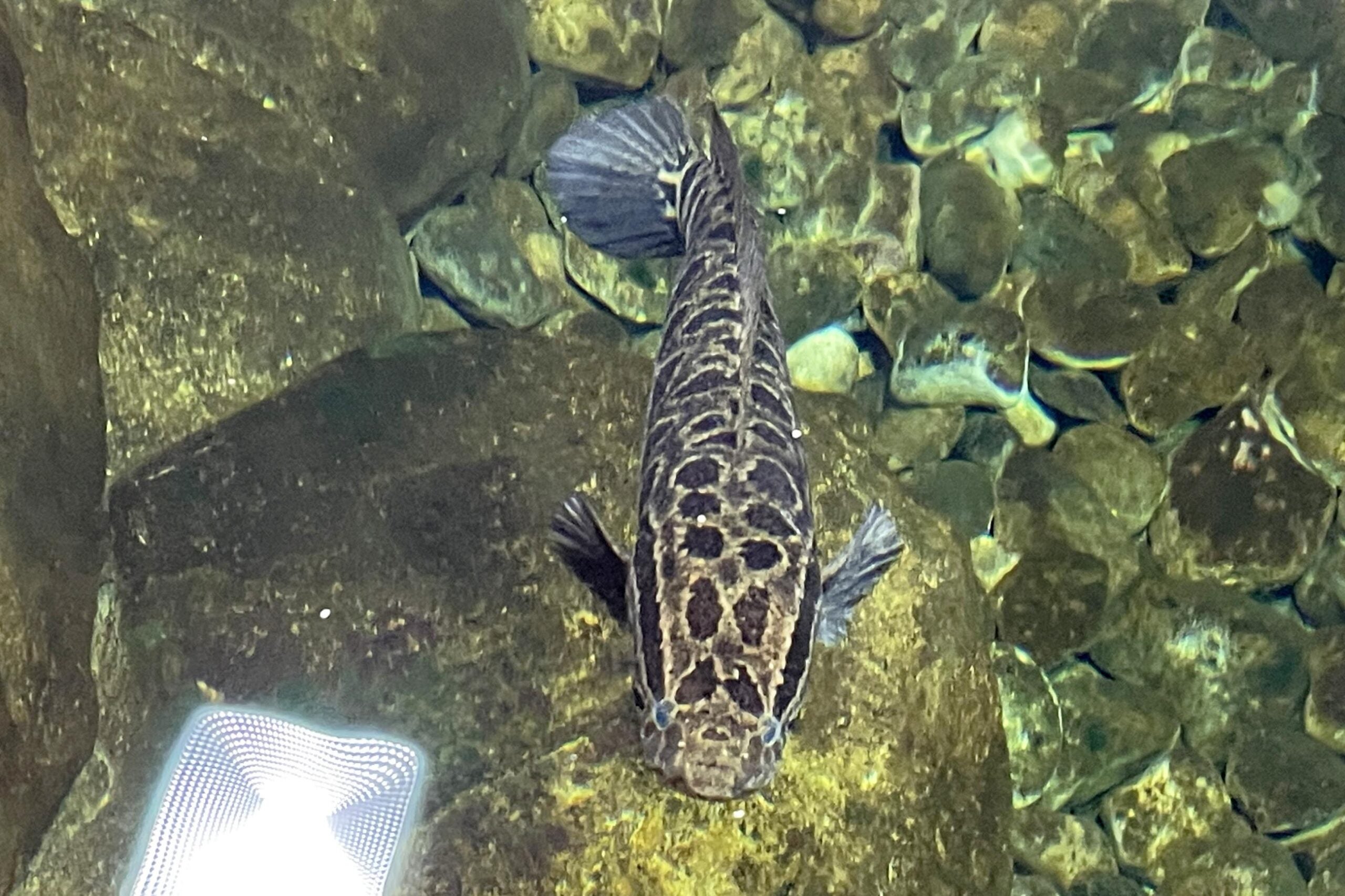Georgia wildlife officials are asking anglers to be on the lookout for an invasive fish species that has made its way into Georgia.
In October of last year, a man fishing in a private pond caught a fish that looked straight out of a b-grade horror movie and officials later confirmed it was a northern snakehead.
South Carolina has battled the pesky fish for some time now, but the catch made last October was the first evidence that the invasive monster has been spotted in Georgia.
According to the Georgia Department of Natural Resources, the fish resembles the native bowfish, it is a narrow fish with a long dorsal fin and has a row of fang like teeth on the business end. However, the snakehead is not native to North America and is usually only found in Yangtze River basin in China.
Experts say that the fish, which has been found in 14 states, were likely purchased as an exotic aquarium pet that was released into the wild. Snakeheads are now prohibited from being sold in the United States, but like other exotic species, they can be found on the black market.

One thing that is drastically different about the snakehead is its ability to survive on dry land. Thanks to a special lung-like chamber next to the gills, the fish can survive out of water for four days.
On land, the fish “walk” by using their head and back fin to move, or rather slither like a snake, hence the name.
What makes the fish such a problem is that they are super aggressive and have a voracious appetite from the moment that they hatch. Snakeheads will eat everything from plankton to frogs, small birds and even other fish.
According to the Smithsonian’s National Zoo and Conservation Biology Institute, the fish can vary in size, but some have been spotted that reach almost four feet in length. Considering that the fish has no real predators, save for the occasional alligator, there is no real limit to the size the fish can grow.
Officials say that should someone catch the fish, they should kill it immediately, then take a picture of its markings and inside the mouth. The angler should then record where the fish was caught and its weight, if possible, and then send the information to Georgia DNR Wildlife Resources Division Fisheries Office.
Fishers are also asked to dump bait buckets and wet wells on boats on dry land to prevent unseen roe from hatching.
Unlike other former aquarium fish, snakeheads are said to be quite tasty and are compared to cod and catfish.
Scott Hudson is the Senior Investigative Reporter and Editorial Page Editor for The Augusta Press. Reach him at scott@theaugustapress.com










